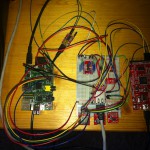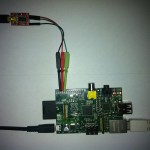I’ve updated my Raspberry Pi 3.2.18 kernel with some patches and slight configuration changes since the last one:
- The USB code is now built-in instead of being a module. This means that people who want to keep their root filesystem on a USB hard disk or similar can do so.
- Some fixes for my I2C driver that prevent it reading/writing further than it should have. This caused at least one user to experience a kernel panic.
I have not yet reverted the MMC/SD commit that I suspect is causing many people issues. So far I have had only one conclusive report that it has helped. If you have had trouble with an SD card in my kernel but not in the official kernel and have the opportunity to build a kernel with commit 84045e4 reverted, please let me know the outcome.
Update: This is no longer the most current kernel. You can find the latest version on my Raspberry Pi kernel project page.


